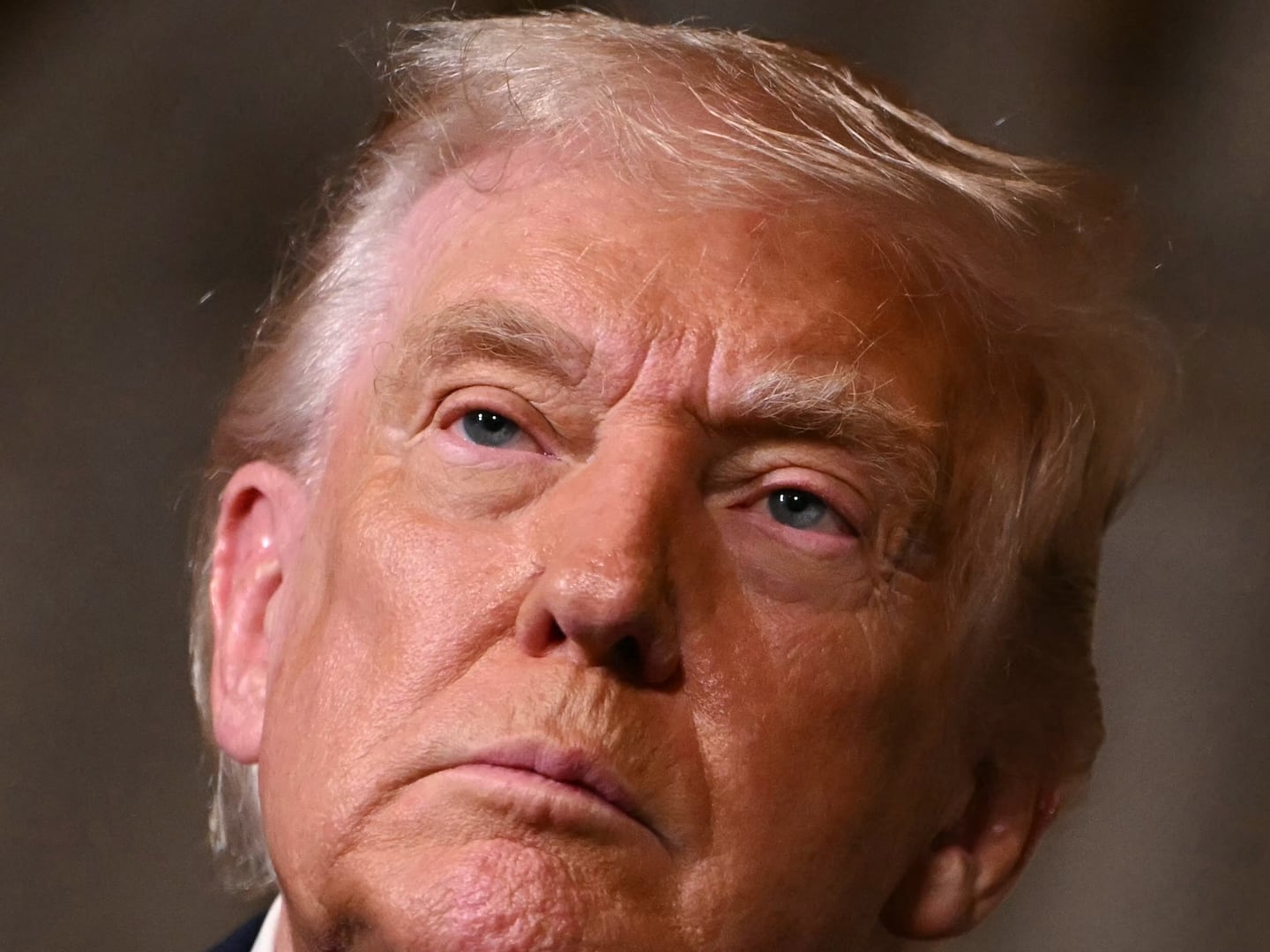Rafael Nadal has never failed a drug test. Yet the 12-time Grand Slam singles champion has been dogged by rumors of doping his entire career.

The speculation—something casual fans are mostly unaware of—has spread from the blogosphere to the mainstream. ESPN the Magazine, Sports Illustrated, and The Bleacher Report have all acknowledged the accusations in stories within the past year. The website Tennis Now openly suggests a “connection” between Nadal and doping. The anonymous blog Tennis Has a Steroid Problem has a laundry list of “evidence” against the 27-year-old Spaniard. (The post includes this editor’s note: “The opinion of this blog is that Nadal is benefiting from the use of performance enhancing drugs.”)
A skit on a French satirical TV show last year depicted Nadal peeing in a car’s gas tank and using a steroid needle as a pen. Former tennis great Yannick Noah wrote an op-ed in November alleging that all Spanish athletes were doping. Retired Belgian player Christophe Rochus questioned Nadal’s ability to dominate the 2012 French Open and still fall to injury two weeks later at Wimbledon.
Is this a witch hunt? In some ways, yes. Conspiracy theorists see red flags everywhere: big biceps, phantom injuries, hair loss, skipping the Olympics, Spain’s rich doping history, and unprecedented stamina. Does acknowledging the speculation sully Nadal’s legacy? No. He’s still one of the best ever—he just happens to be caught in an era of performance-enhancing drugs.
Nadal, who did not respond to requests for comment, has denied any use of banned substances.
But tennis needs to clean up its act if there is any hope to ending the chatter about Nadal and other top players. When the anti-doping watchdog is weak, as many say tennis’s is, never having failed a drug test just isn’t convincing enough. Lance Armstrong never tested positive, but he ran one of the most sophisticated drug rings in professional sports. Baseball’s ’90s renaissance was fueled not only by home runs, but steroids, too. In both of those sports, tons and tons and tons of drugs were gobbled up and injected, catapulting dopers to the top.
And at a moment when men’s tennis has seen four players dominate the sport, waging unprecedented five-hour, five-set matches, an analysis of the anti-doping efforts at the International Tennis Federation (or ITF, the governing body for the sport) is revealing: The flimsy oversight program and its lack of transparency appear largely to blame for fueling the doping suspicions.
After Armstrong’s admission, Swiss player Roger Federer, currently the world No. 3, said it would be “naïve” to think the sport is clean. Top-ranked Novak Djokovic and Andy Murray, the winner of this year’s Wimbledon tournament, have advocated for more blood testing. Nadal, clearly annoyed with the speculation, wants more transparency. “Not everyone has to pay for some sinners,” he said.
****
On a Sunday morning in March, the executive director of the ITF’s science and technical department sat in the lobby of the Sofitel New York. Stuart Miller, dressed in a black V-neck T shirt and khaki pants, looks like a taller and leaner version of 007 actor Daniel Craig. When people complain about tennis’s anti-doping program, they’re complaining about him.
“I welcome it with open arms,” Miller says when asked about Federer, Nadal, Murray, and Djokovic’s calls for more drug tests. “It’s absolutely fantastic. It’s in everybody’s interest to have a clean sport.” Miller, who’s helmed the program since 2006, has a tendency to take a question, chew it into its individual pieces, and spit out a very bland jargon-filled answer. He says that he can’t comment on individual cases—a common refrain.
The common refrain among Miller’s critics, however, is that his program is inconsistent, does not utilize the most effective techniques, and features a maddening lack of public disclosure. The whole thing is designed to fail, according to the anonymous editor of the blog Tennis Has a Steroid Problem: “The prevailing attitude appears to be that it is better to not to look very hard for doping.”
Here’s how it currently works. Players take part in two types of tests: in-competition tests during Grand Slams (reportedly after losing a match) and completely unannounced out-of-competition (OC) tests. Traditionally, the sport has relied on urine tests for both cases, which are an easy way to spot steroids. Blood tests, which detect human growth hormone (HGH, or what made some baseball players monstrous) and certain types of the more sophisticated blood doping, are more expensive and expire more quickly.
Miller says his organization should be doing more OC testing, and that there is especially a case for increasing OC blood tests, which are probably the most effective way to catch a doping player. In 2012, tennis conducted 2,185 tests—only 63 of which were OC blood tests. That’s a small number, though more than the 21 done in 2011. (For comparison, cycling conducted 13,745 tests in 2011, 3,314 of which OC blood tests.) This year, tennis also adopted the biological passport, proven to be effective in cycling. These digital documents track a player’s blood profile, meaning they can detect changes in biological markers over time. The drug might be washed out of your system, but science says something fishy’s going on. Unfortunately, the passports need a few years of player data to really be effective.
A major problem with the OC tests, in any case, is that they’re regarded by many as a joke. In 2011, Serena Williams locked herself in her Los Angeles home’s panic room when she thought an intruder was lurking outside. It was a drug tester; ITF data shows Williams didn’t take an OC test at all in 2010 or 2011.
In 2012, Djokovic, Murray, and Federer each had around seven in-competition tests and up to three OC tests—it’s unclear whether these were urine or blood tests. When it comes to OC testing, an injury to a top player like Nadal is probably reason enough for specific “targeting,” and would explain his unusually high seven-plus OC tests (PDF) in 2012.
Another common complaint is that if a player tests positive, his or her name isn’t revealed right away—or possibly at all. Only after a tribunal has determined guilt, usually within six months, is a suspension revealed, which means that players can fail a drug test without fans ever finding out. This closed system undoubtedly fuels many of the juiciest doping suspicions; some tennis watchers suspect that Nadal’s seven-month absence from the professional circuit between July 2012 to February 2013, and his loss at the 2009 French Open and withdrawal from Wimbledon that year, may actually have been a “silent doping ban” that was never publicly disclosed.
Consider the case of now No. 733–ranked Fernando Romboli. In May, the ITF announced that the Brazilian had tested positive for a banned substance and faced an eight-and-a-half-month suspension. In that same press release, it also announced that Romboli would be reinstated. Since he had actually tested positive in September and had opted for a voluntary provisional suspension, he had served his punishment before it was ever acknowledged.
“There is an option to disclose those names earlier,” Miller says. “But that’s at a stage in the process where there are many reasons why athletes can provide evidence to show that they haven’t committed a violation and the logic of releasing names when there is a risk that public perception will label an athlete who is innocent as being a doper doesn’t particularly sit well with this idea of innocent until proven guilty.”
****
Drugs aren’t foreign to tennis. John McEnroe said that he unknowingly took steroids for six years. Andre Agassi revealed that he tested positive for meth in 1997, but the governing body threw away the test after he said he had accidently sipped his assistant Slim’s spiked soda. An ITF anti-doping tribunal ruled in 2009 that Richard Gasquet accidently ingested cocaine while kissing a woman at a nightclub.
While cases like these raise eyebrows, there’s a chance that concrete evidence of doping may be revealed through the efforts of governments sniffing around criminal cases.
Wayne Odesnik, a 27-year-old American tennis player, was caught importing HGH into Australia in 2010. While he didn’t test positive for the drug, Odesnik was suspended for two years. His punishment was cut in half because he gave “substantial assistance” to the ITF.
Did he snitch on other players? An ex-player who wished to remain anonymous (but says he’s “not familiar with Wayne’s syringe”) says there may be a sense of omertà at play—tennis stars don’t want to rat out their peers. Unfortunately, the ITF is not at liberty to comment on the case.
Odesnik’s name has also surfaced in documents of Biogenesis, an anti-aging firm in South Florida that has been linked to selling drugs and ensnared Yankees slugger Alex Rodriguez.
The case with the most potential, however, is Operation Puerto. In 2006, Spanish doctor Eufemiano Fuentes was busted for running a massive doping ring linked to cycling, tennis, soccer, boxing, and track. The raid, “Operation Puerto,” confiscated more than 200 blood bags labeled with code names.
The trial took place earlier this year in Madrid, but despite the calls from absolutely everyone to reveal Fuentes’s list of of clients— World Anti-Doping Agency, the Italian doping authority, the Spanish doping authority, the ITF, and even Dr. Fuentes himself, who said he would identify every single sample—the Spanish judge ordered the destruction of all bags. Because of privacy laws. Fuentes, given a one-year suspended sentence, says he’s now willing to sell his list of names to the highest bidder.
A spokesperson at WADA says that the organization has been trying for the last seven years to have evidence from the operation made available to the anti-doping authorities. Miller says the ITF asked for the names of the players, too, but was rebuffed. Andy Murray tweeted that the ruling to destroy blood bags was “beyond a joke … biggest cover up in sports history?” And Nadal—who was briefly rumored to be on the list—said that it was a “mistake” to destroy the evidence and that only cheaters benefited.
He’s right. It is unfair that the top players, especially Nadal, are viewed with cynicism. But until the anti-doping program truly improves and cases like “Operation Puerto” are closed, that’s the reality of 2013. As Grantland’s Bill Simmons wrote in his February column “Daring to Ask the PED Question,” “Athletes pushed us to this point. We need better drug testing. We need blood testing. We need biological passports. We need that stuff now.”
As the anti-doping program ramps up, it’s possible there will be no increase in positive tests and no decline in performance. Whether that means cheating is eradicated, or the science of dopers is one step ahead of the testers, is impossible to know.
“It would be naïve to think that we detect every instance of doping in tennis,” Miller says. “But that doesn’t mean that we stop looking.”






